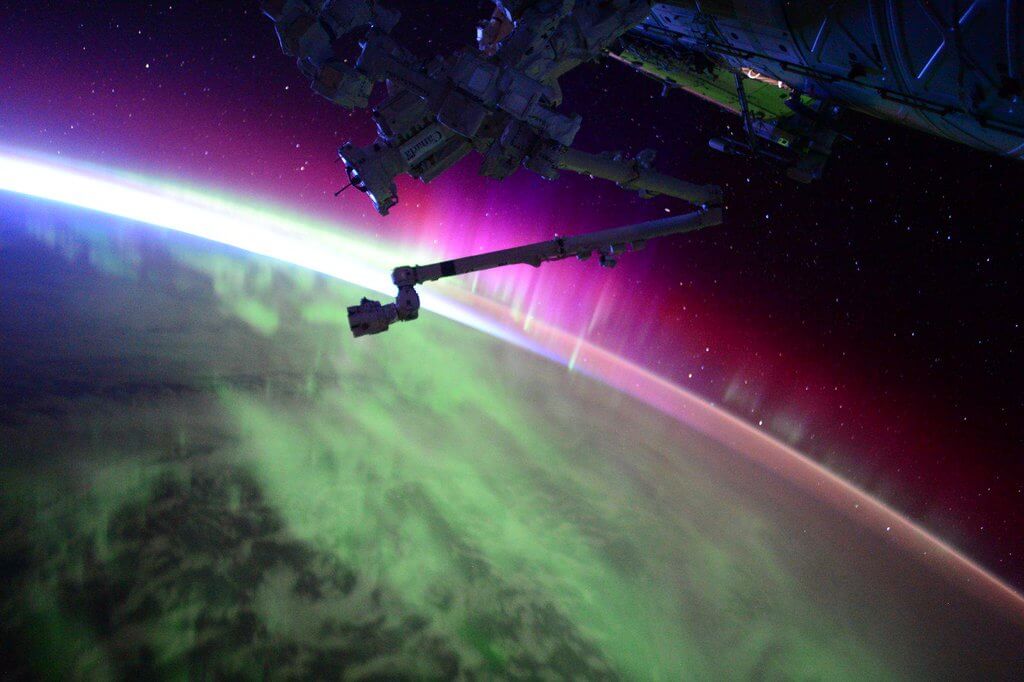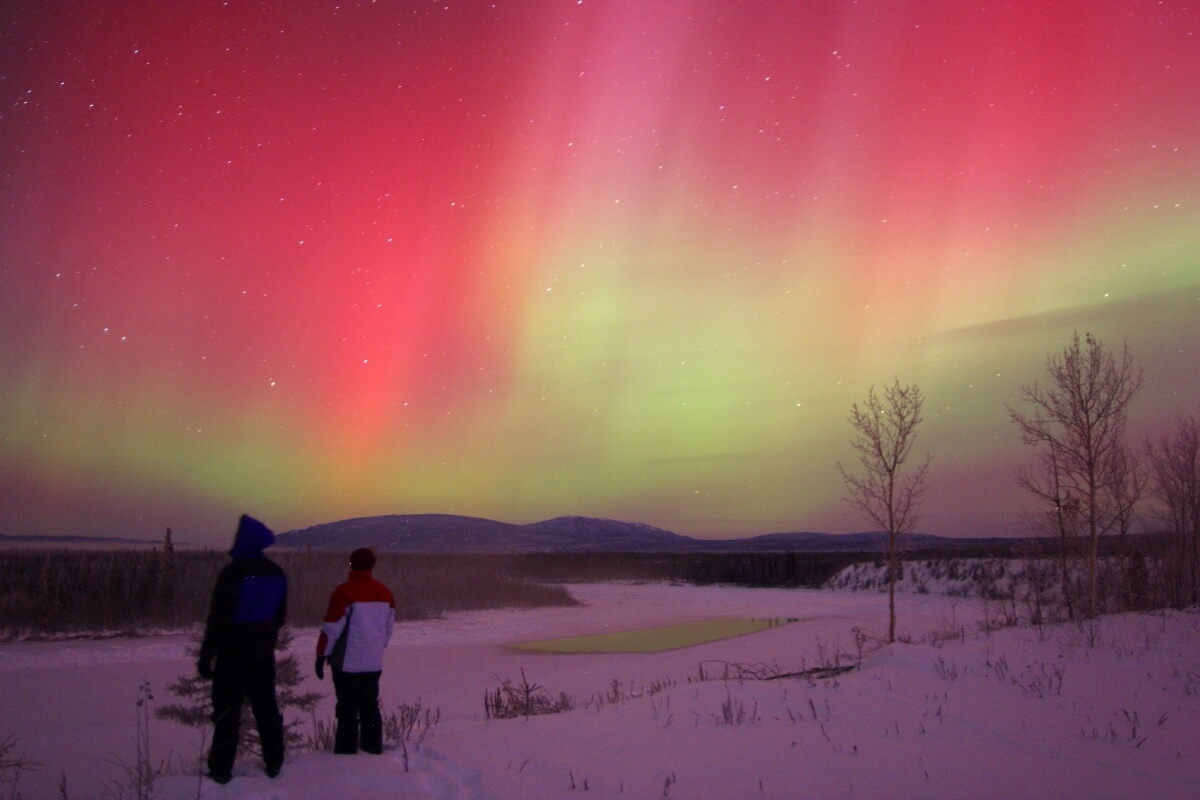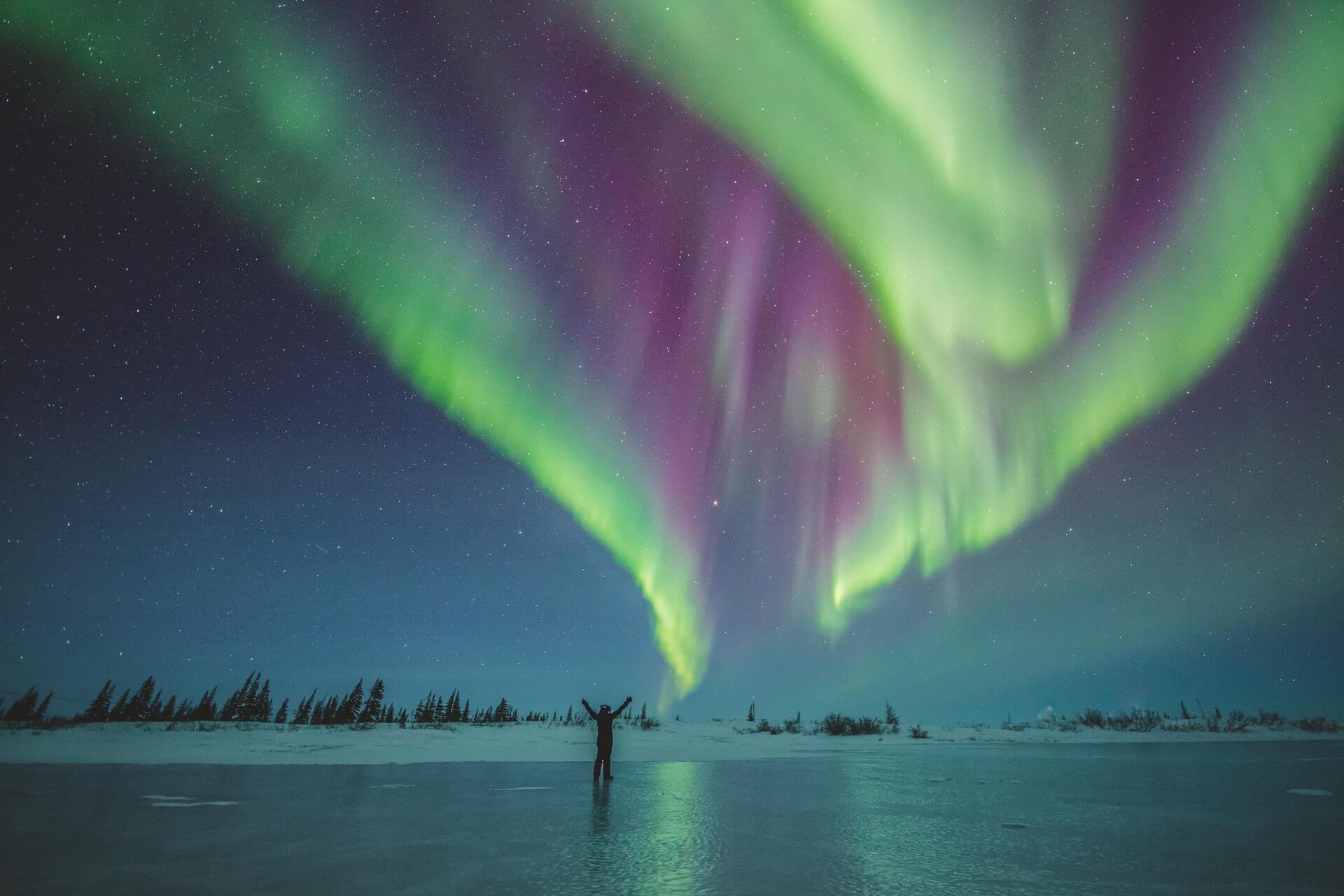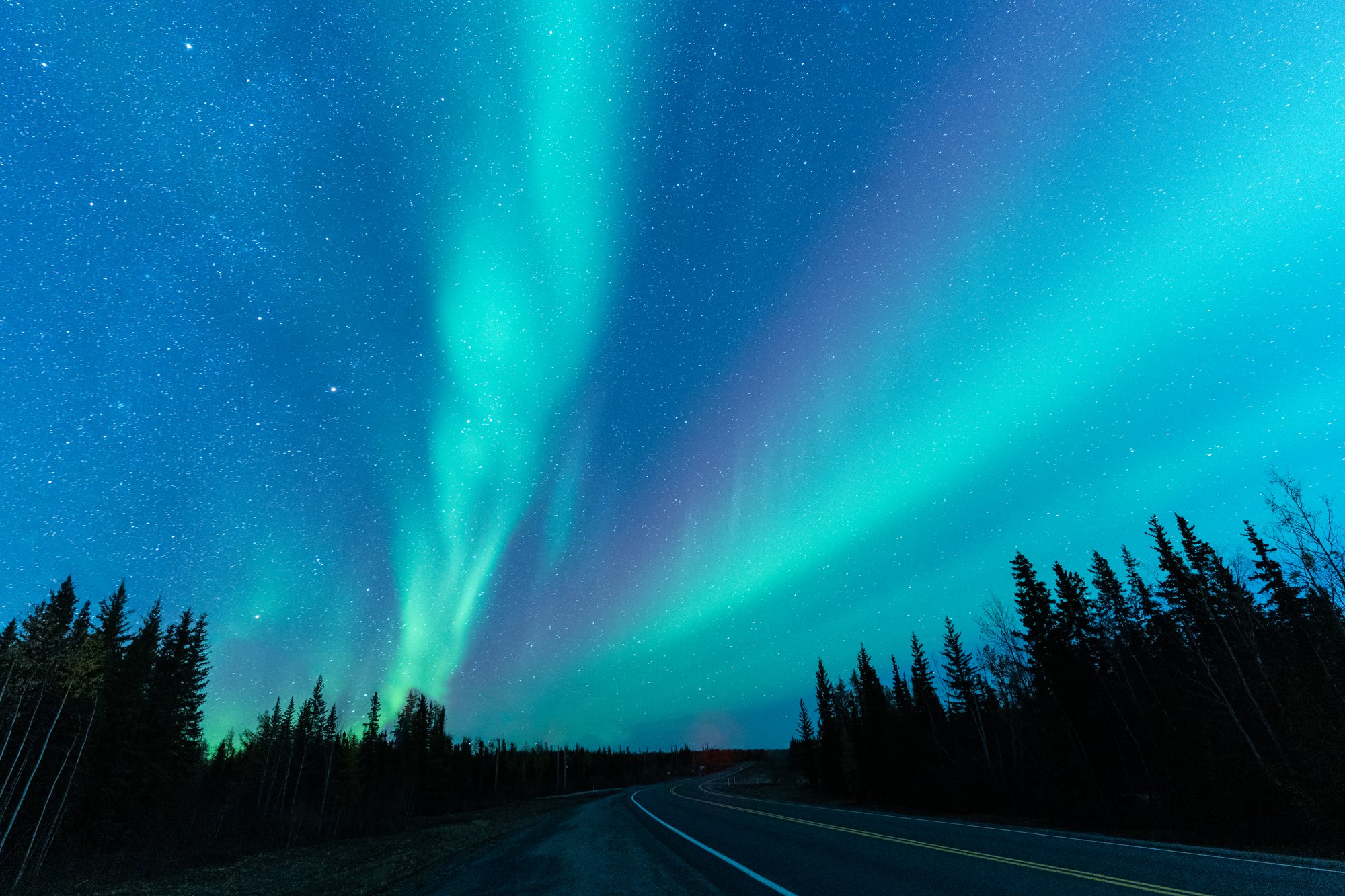The Solar Maximum Is Coming. What Does It Mean For Aurora Viewing In Canada?

NASA astronaut Scott Kelly took this photo of the Aurora over Earth during his mission on the ISS. Photo c/o NASA
Silvery, shimmery and ethereal, the Northern Lights are on many people’s list of dream experiences. Those that have seen a strong Aurora dancing in the night sky will tell you it is a breathtaking sight.
As with all natural phenomenon, the Aurora Borealis is unpredictable — even on dedicated Aurora vacations, no one can guarantee a sighting. But the good news is that your chances of seeing the Northern Lights are increasing each year as we inch our way towards a solar maximum — a period of strong volatile activity on the sun.
Read on to learn more about how the increasingly angry sun will impact the visibility of the Aurora in Canada.
See our Guide to the Aurora Borealis to discover the best places in Canada to see the Northern Lights.
The Sun’s 11-Year Cycle
Every day, scientists around the world observe the sun in much the same manner as their predecessors have done for hundreds of years. Looking through a reflection from a telescope, they trace and map (by paper and pencil) the appearance and disappearance of the sun’s spots — a measure of how active the sun is at any moment. More spots equal more frequent solar storms.
Solar storms — which occur when the sun expels huge bursts of energy — affect us on Earth in many ways. They can interfering with our communication systems and cause electrical blackouts. And of course, the visual effect of these storms when they hit Earth’s atmosphere is the spectacular Northern Lights (and Southern Lights down near the magnetic South Pole).
Even as technology has gotten better and our observation of space and the solar system has increased to levels never before thought possible, there are still scientists out there that follow this old method so as to have a continuous common record of the sun’s activities.
Because of this meticulous and long-term record keeping, we have a good idea of how the sun goes through periods of high and low activity over (approximately) an 11 year cycle.
We entered Solar Cycle 25 in December 2019 when the sun was at its lowest point of activity. Each year the number of sun spots has grown and eruptions have increased. While scientists initially predicted a fairly quiet cycle, the sun has exceeded expectations every year, proving to be more active than it was in Solar Cycle 24. Now it seems possible that we are heading into one of the strongest cycles since we’ve started keeping records in the 1700s.
The result would be more frequent and stronger Aurora.
When can we expect the Solar Maximum to occur?
Scientists can’t be completely certain as to the exact timing of our next Solar Maximum but they are estimating that it will occur between November 2024 and March 2026, with the most likely time being July 2025.
This means that each year now will see a strengthening of solar storms. On the sun, this will mean that a building energy will create more explosions and on Earth, this will mean more reliable sightings of the Aurora. This is a good time to start planning your dream Aurora getaway. But where should you go?
Much of Canada sits under the Auroral Oval, a radius of land up to 2,500 km from the Earth’s magnetic pole. Places such as Churchill Manitoba, the Northwest Territories and the Yukon are all amazing spots in which to see the Aurora because they sit under the Oval and have low to no light pollution to distract from the Lights. The Aurora is also clearly visible in northern parts of nearly all of our provinces. As you get further south from the Auroral Oval, the Aurora will appear more on the northern horizon rather than overhead as it will when you are in the correct zone. If you travel north of the Oval, the Lights can appear on the southern horizon.
Southern Ontario, where the largest concentration of Canada’s population resides, is not under the Auroral Oval. However, stronger solar activity means that the Aurora might even be visible as far south as Toronto. Read our Journal post on best spots in Ontario to observe the night sky with low light pollution.
Where is the best place in Canada to see the Northern Lights?
Now that we know solar activity is set to increase from now until 2025-2026 and this is a great time to plan an Aurora holiday, where should you go? The answer depends on what you want out of your vacation. The most successful Northern Lights holidays are those that are rich in daytime activity options and have comfortable places from which to wait for the Aurora to appear at night.
As with any natural phenomena, it is impossible to predict how strong an Aurora will be on any given night in advance and sometimes seeing an Aurora is not possible. This is why it is vital to have other incredible activities — whether that be wildlife viewing, cultural experiences or historic tours — available to make the most of your trip.
Space weather can be predicted a few days before as eruptions from the sun take a while to make their way to Earth, but certainly it cannot be predicted weeks or months in advance. Clear skies and dark nights are necessary for seeing an Aurora, which is why winter is a popular time for Northern Lights viewing, although many places also offer reliable Aurora tours in late summer and early fall, as well as early spring. The most popular places in Canada to go on an Aurora-focused holiday are Churchill in Northern Manitoba, Whitehorse in the Yukon and Yellowknife in the Northwest Territories. All three of these cities are set up to host evening/night tours.
Outside of visiting a city and taking evening Aurora tours, you can also book into a lodge away from city lights where the Northern Lights can be viewed just by stepping outside.
We have a variety of options available for those interested in booking a Canadian Northern Lights vacation so please reach out with any questions you may have and be sure to take a peek at our dedicated Aurora Borealis in Canada page for links to packages, tours and experiences.







